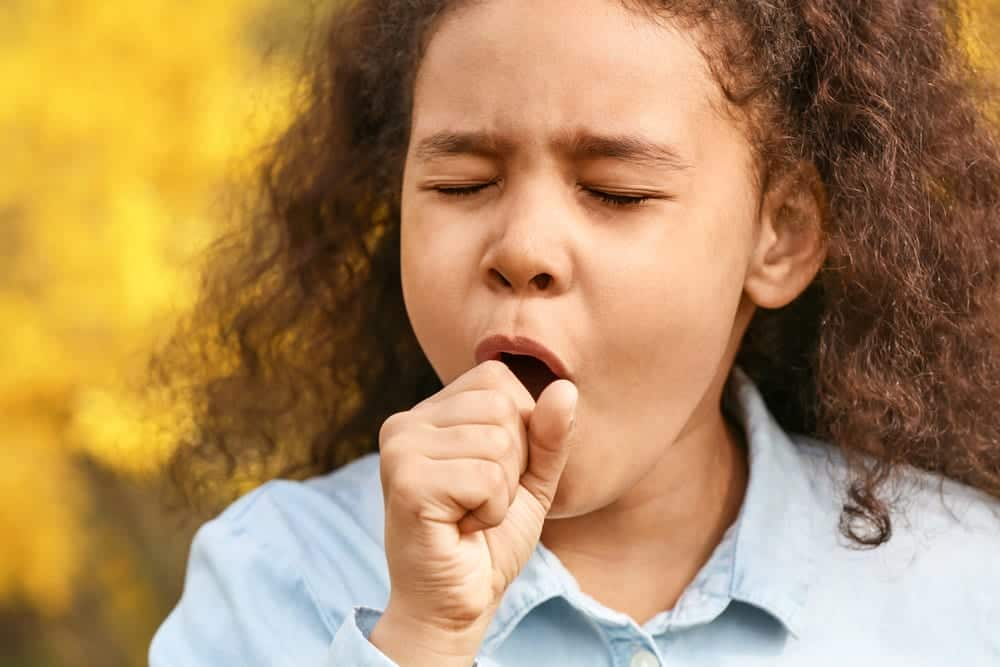Pertussis, commonly known as whooping cough, is a highly contagious respiratory infection caused by the bacterium Bordetella pertussis. While pertussis can affect people of all ages, it is particularly dangerous for infants and young children. The characteristic “whooping” sound during coughing spells gives the illness its common name.

Pertussis Symptoms
Pertussis typically progresses through three stages:
1. Catarrhal Stage (1-2 Weeks)
The catarrhal stage resembles a common cold with mild symptoms, including:
- Runny nose
- Sneezing
- Low-grade fever
- Mild cough
This stage is highly contagious, and the bacteria can easily spread to others through respiratory droplets produced when coughing or sneezing.
2. Paroxysmal Stage (1-6 Weeks or Longer)
During the paroxysmal stage, the cough becomes severe and distinctive:
- Fits of rapid coughs: Often followed by a “whoop” sound as the person struggles to breathe in.
- Vomiting after coughing spells
- Exhaustion
- Turning blue due to lack of oxygen (cyanosis), especially in infants
3. Convalescent Stage (Weeks to Months)
The convalescent stage is the recovery phase:
- Coughing fits become less frequent and less severe.
- Full recovery may take weeks or even months.
Pertussis: Transmission and Spread
Pertussis is highly contagious and primarily spreads through:
- Respiratory droplets: When an infected person coughs or sneezes, droplets containing the bacteria can travel through the air and be inhaled by others nearby.
- Close contact: Prolonged exposure to an infected individual, especially in enclosed spaces, increases the risk of transmission.
Pertussis Complications
While most people recover from pertussis without long-term problems, complications can occur, particularly in infants and young children. These can include:
- Pneumonia (lung infection)
- Seizures
- Brain damage (due to lack of oxygen)
- Rib fractures (from severe coughing)
- Dehydration
- Death (rare, but more common in infants)
Pertussis: Vaccination Is Key to Prevention
Vaccination is the most effective way to prevent pertussis. The DTaP (diphtheria, tetanus, and acellular pertussis) vaccine protects against pertussis, as well as diphtheria and tetanus.
The recommended DTaP vaccination schedule for children in many countries is:
- 2 months old
- 4 months old
- 6 months old
- 15-18 months old
- 4-6 years old
Boosters (Tdap) are recommended for:
- Preteens (11-12 years old)
- Adults (every 10 years)
- Pregnant women (during each pregnancy)
MedicW Recommendations: Medical Supplies for Pertussis Management
- Sampling Swabs: MedicW provides high-quality nasopharyngeal swabs for collecting samples to test for the presence of Bordetella pertussis and confirm the diagnosis.
- Syringes: Used for administering antibiotics and other medications necessary to treat pertussis, especially in severe cases.
- Respiratory Protection: Masks, especially N95 respirators, are crucial for healthcare professionals and individuals caring for infected patients to minimize the risk of transmission.
Pertussis Treatment
Treatment for pertussis typically involves:
- Antibiotics: Antibiotics, such as erythromycin, azithromycin, or clarithromycin, are prescribed to kill the bacteria and reduce the severity and duration of illness.
- Supportive care: This may include rest, fluids, and over-the-counter medications to manage fever and discomfort.
- Hospitalization: In severe cases, especially in infants and young children, hospitalization might be necessary for monitoring, oxygen therapy, and intravenous fluids.
Pertussis: Frequently Asked Questions
1. Can adults get pertussis?
Answer: Yes, adults can get pertussis. While symptoms in adults are often milder than in children, they can still spread the infection to vulnerable populations, such as infants.
2. How long is pertussis contagious?
Answer: Pertussis is most contagious during the catarrhal stage (the first 1-2 weeks). Antibiotics can shorten the contagious period. Without treatment, pertussis can be contagious for up to 3 weeks after the cough starts.
3. Can I get pertussis even if I’ve been vaccinated?
Answer: While the pertussis vaccine is very effective, it’s not 100% effective. Some people who are vaccinated might still get pertussis, but their symptoms are usually milder and shorter-lived.
4. What should I do if I think I have pertussis?
Answer: If you develop symptoms of pertussis, consult a doctor immediately, especially if you’ve been in contact with infants or young children.
5. How is pertussis diagnosed?
Answer: Pertussis is diagnosed through a combination of physical exam, symptoms, and lab tests. A nasopharyngeal swab is collected and sent to a lab to detect the presence of Bordetella pertussis bacteria.
6. How can I protect my baby from pertussis?
Answer: The best way to protect your baby is to ensure they receive the DTaP vaccine on schedule. Pregnant women should also get the Tdap vaccine during each pregnancy to provide antibodies to their babies. Encourage family members and close contacts to get vaccinated as well.
Pertussis: Conclusion
Pertussis is a serious respiratory infection, especially for infants and young children. Vaccination is the cornerstone of prevention, along with good hygiene practices, such as covering coughs and sneezes. Early diagnosis and treatment with antibiotics are crucial to reduce the severity of the illness and prevent its spread.
MedicW provides high-quality medical consumables, such as sampling swabs and syringes, that play a vital role in supporting healthcare professionals in the diagnosis, treatment, and management of pertussis.
We urge everyone:
- Get vaccinated against pertussis.
- Practice good hygiene, especially when you are sick.
- Seek medical care if you suspect you or your child has pertussis.
By working together and promoting vaccination, we can minimize the impact of pertussis and safeguard the health of our communities, especially our vulnerable infants and children.
MedicW is committed to being your trusted partner in providing high-quality medical consumables. Explore our comprehensive range of products and discover how we can support your healthcare needs. Visit us at medicw.com or contact our team at [email protected].
Link to this article: Pertussis: Whooping Cough and Its Prevention
